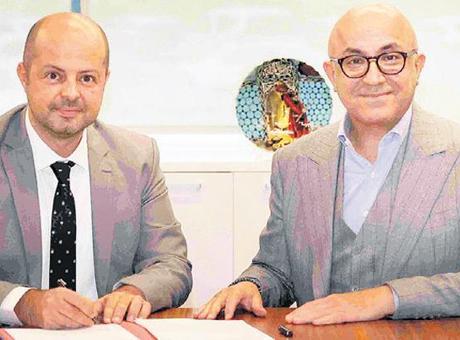Spotting the Signs of Card Fraud: What Every Consumer Should Know

Card fraud is a rapidly growing issue that affects millions of consumers worldwide. As technology advances, so do the tactics used by fraudsters, making it increasingly difficult to detect fraudulent activity before it causes significant harm. Whether you’re shopping online, making a purchase in person, or simply managing your finances, being aware of the signs of card fraud can help you protect your financial information. This article aims to highlight the key signs that may indicate you’ve fallen victim to card fraud, as well as steps you can take to minimize risk.
Understanding Card Fraud
Card fraud involves the unauthorized use of someone’s credit or debit card to make a purchase, withdraw cash, or otherwise access their account. While fraud can occur in many ways, the most common methods include physical card theft, online fraud, and account takeover. Each method can lead to significant financial losses, emotional distress, and damage to one’s credit score. With the rise of digital transactions, fraud is increasingly shifting to online platforms, making it more difficult to detect.
Consumers must remain vigilant in order to spot potential fraud before it escalates. One of the key components of avoiding financial loss due to card fraud is understanding the common signs of fraudulent activity.
Signs of Card Fraud
There are several red flags that may indicate fraudulent activity on your credit or debit card. Being aware of these signs can help you act quickly to prevent further damage.
Unfamiliar Transactions
One of the most obvious signs of card fraud is unfamiliar transactions. If you notice purchases or charges on your statement that you did not make, it could be a sign that someone has gained access to your card information. It’s crucial to regularly monitor your bank and credit card statements for any discrepancies, even small ones. Fraudsters often make small, low-value transactions initially to test whether the card is still active before attempting larger purchases.
Missing or Stolen Cards
Another common sign of card fraud is the sudden disappearance of your physical card. If you lose your card or it is stolen, it’s critical to report it immediately to your financial institution to prevent unauthorized use. Fraudsters can use stolen cards to make large purchases before the victim notices the loss. Even if you have a digital wallet or contactless payments enabled, losing your phone or device could expose you to risks if the device is compromised.
Unexplained Charges or Withdrawals
You may also notice withdrawals or charges that seem out of the ordinary or don’t match your usual spending habits. If you frequently shop at certain stores or websites, but suddenly see a charge from an unfamiliar business or a withdrawal from an unfamiliar ATM, it’s a strong indication that something is amiss. Fraudsters may also try to make purchases in a different geographical location than you usually do, so it’s important to pay attention to where transactions occur.
Card Declines or Unusual Alerts
A sudden decline when making a purchase could signal that fraudsters have attempted to access your account. If you’ve never had trouble with your card and are suddenly facing declines, it’s a good idea to check your account for any unauthorized activity. Many financial institutions now offer fraud alert services, which notify you in real-time of suspicious activity. If you receive unexpected alerts regarding account access or transactions, don’t ignore them.
Unusual Communications from Your Bank
Another common tactic used by fraudsters is phishing, which involves tricking consumers into providing sensitive information. You might receive a suspicious email, text, or phone call from someone claiming to be your bank or credit card issuer. These communications may ask for personal information, such as your card number or PIN. If you receive such communications, don’t respond directly or click on any links. Always contact your bank through official channels to verify the request.
카드깡: The Hidden Threat of Card Fraud
In addition to common fraud tactics, consumers should also be aware of more sophisticated forms of card fraud, such as 카드깡 (card gang). This form of fraud is prevalent in certain regions, where organized syndicates exchange stolen or compromised card information for cash or illegal goods. Fraudsters involved in 카드깡 often use stolen card details to perform high-value transactions, such as purchasing expensive items or withdrawing large sums of money. The rise of 카드깡 has created a significant threat to consumers and businesses, as it is a highly organized and complex form of fraud.
To protect yourself from such threats, it’s important to regularly check your transaction history and be cautious of anyone asking for your card information, especially in non-traditional settings like online marketplaces or unverified merchants.
What to Do If You Suspect Card Fraud
If you suspect that your card has been compromised or you’ve noticed any of the signs mentioned above, it’s crucial to take immediate action. Below are steps you can take to minimize the impact of card fraud:
Contact Your Bank or Card Issuer Immediately
The first step is to report the fraud to your financial institution. Many banks have 24/7 fraud detection services, and the sooner you report the issue, the better your chances of preventing further unauthorized charges. Request that your card be blocked and a new one issued to you.
File a Police Report
In cases of significant fraud or if your card was stolen, you should file a police report. This can help initiate an investigation and may assist in tracking down the fraudster. Some jurisdictions require a police report for certain fraud cases, especially if your identity was stolen.
Dispute the Charges
If fraudulent transactions have been made, contact your card issuer to dispute the charges. Most banks offer fraud protection services that can help resolve the issue and reverse unauthorized transactions, but it’s important to act quickly.
Change Your Online Account Passwords
If your online banking or shopping accounts have been compromised, change your passwords immediately. Use strong, unique passwords for each of your accounts and enable two-factor authentication whenever possible. This adds an additional layer of security and makes it harder for fraudsters to gain access.
Stay Vigilant in the Future
Preventing card fraud in the future requires continued vigilance. Use secure payment methods, avoid public Wi-Fi when making transactions, and be wary of phishing attempts. Additionally, consider using a virtual credit card for online purchases, as this can provide an extra layer of protection.
Conclusion
Card fraud is an evolving threat that can have significant financial and emotional consequences for consumers. By staying vigilant and being able to spot the signs of card fraud, you can protect yourself from becoming a victim. Regularly monitoring your transactions, being cautious of suspicious communications, and understanding the different types of fraud—such as 카드깡—can help you take proactive steps to safeguard your financial information. If you suspect fraud, acting quickly is essential to minimize losses and resolve the issue effectively.
The post Spotting the Signs of Card Fraud: What Every Consumer Should Know first appeared on Bollywood News World.

